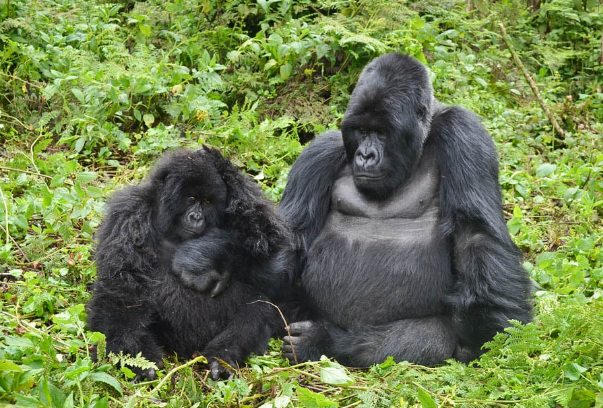Title: The Differences Between Male and Female Gorillas
Introduction
Understanding the differences between male and female gorillas is not only fascinating but also essential for conservation efforts and enhancing our knowledge of these incredible creatures. These social animals exhibit distinct characteristics that reflect their roles within their groups, offering insights into their behavior, biology, and ecology.
Physical Differences
One of the most apparent differences between male and female gorillas lies in their physical characteristics. Male gorillas are significantly larger than females, often weighing between 300 to 485 pounds compared to females, who typically weigh around 150 to 250 pounds. Males also exhibit a prominent feature known as the silverback, referring to the gray hair that develops on their backs as they mature. This silverback signifies dominance and maturity, serving as a protector of their group. In contrast, female gorillas have a more slender build and lack this distinctive coloration, which helps them maintain agility and flexibility in navigating their forest habitats.
Social Structures
The social dynamics among gorillas are deeply influenced by their gender roles. Male gorillas usually lead a group, called a troop, which may contain several females and their young. This hierarchy is essential for maintaining order and safety within the group. Females, on the other hand, are primarily responsible for nurturing the young and teaching them essential survival skills. Their relationships with other females are vital for raising offspring, as they often band together to provide support and protection. Understanding these social structures can give us insight into the complexities of gorilla life and their importance in the ecosystem.
Behavioral Traits
Male and female gorillas also differ in their behaviors and interactions. Males are known for their displays of strength and dominance, often engaging in vocalizations and physical displays to assert their authority or ward off threats. These behaviors can include chest beating and loud calls. Females, however, tend to exhibit nurturing and calm behaviors, focusing on the care and social bonding with their young. Observing these differences can help us comprehend the overall dynamics of gorilla society, highlighting the cooperative efforts that contribute to their survival.
Conclusion
Exploring the distinctions between male and female gorillas is not just an academic exercise; it aids in the conservation of these magnificent animals and their habitats. By understanding their biology, social structures, and behaviors, we can appreciate the intricacies of gorilla life. If you’re interested in learning more about these fascinating creatures, consider visiting a local zoo, joining a gorilla-watching expedition, or reading up on gorilla conservation efforts. Each step brings us closer to protecting these remarkable animals for future generations.

